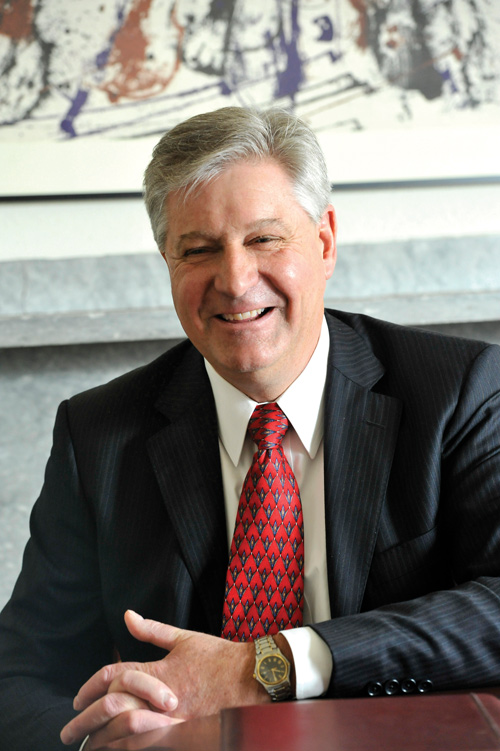
Steven J. Fluharty, Dean and Thomas S. Gates, Jr. Professor of Psychology, Pharmacology, and Neuroscience
Photo credit: Candace DiCarlo
Thursday, May 2, 2019
By Steven J. Fluharty
Liberal arts institutions are sometimes thought to be isolated from real-world concerns. In my experience at Penn Arts & Sciences, this couldn’t be further from the truth. Faculty from across the School engage in pressing issues every day, and our science departments are producing a steady stream of exciting discoveries that have the potential to reshape the future.
In just the past year, Charles Kane and Eugene Mele from the Department of Physics and Astronomy received two major awards for their work on a new class of materials, known as topological insulators, that may enable super-fast quantum computing. Chemistry’s Virgil Percec led research that has uncovered how cells use sugars to communicate, and in doing so has provided a new tool that can be applied to a range of questions about how cells function at the molecular level. Other research, led by Biology’s Doris Wagner, has resulted in the discovery of a gene that, when turned off, allows flowers to form. In Earth and Environmental Science, Reto Gieré and his colleagues reported on a new mineral that has the potential to immobilize nuclear waste. And if space allowed, this list could go on.
Among all the pressing issues that are engaging the attention of our faculty, research on sustainable energy is particularly urgent. At recent regional events, a number of our alumni have had the opportunity to hear about some exciting work in climate science and energy research firsthand from our faculty experts. I’m thrilled to share that the efforts of Penn’s energy scientists just got a major boost in the form of a $50 million gift from P. Roy Vagelos, C’50, PAR’90, HON’99, and Diana T. Vagelos, PAR’90. The gift will be used to build a new Penn Arts & Sciences and Penn Engineering facility to house energy research programs, many of which are in place thanks to Roy and Diana’s previous generosity.
In addition to making discoveries that are fueling advances across the sciences, our faculty are focused on teaching the scientists of the future. Penn’s Bridge to Ph.D. program aims to boost the number of mathematicians from underrepresented backgrounds, offering a master’s degree and preparation for doctoral programs. And this summer, as every year, our undergraduates will join labs across the University and engage in research alongside leading biologists, physicists, chemists, and other scientists, investigating topics ranging from the mechanisms of cancer to language processing and solar energy storage.
Even as we celebrate the enormous impact of the Vageloses’ gift, other areas are in dire need of attention. The scientists of tomorrow are taking math and physics classes in David Rittenhouse Laboratory, a facility originally built in 1954, decades before the birth of nanotechnology or the discovery of the Higgs boson. In order to maintain excellence across the sciences, we will need a 21st-century building where undergraduates can learn and faculty can pursue cutting-edge work.
As a scientist myself, it is sometimes easy for me to assume that the world outside the lab and beyond campus values science and its contributions to our society, economy, and general well-being. Yet, in my role as Dean, I am regularly reminded that the need to make the case for science is a job that has no end. But thanks to the compelling and important work of our students and faculty, and the incredible vision and generosity of supporters like the Vageloses, that job is easier.